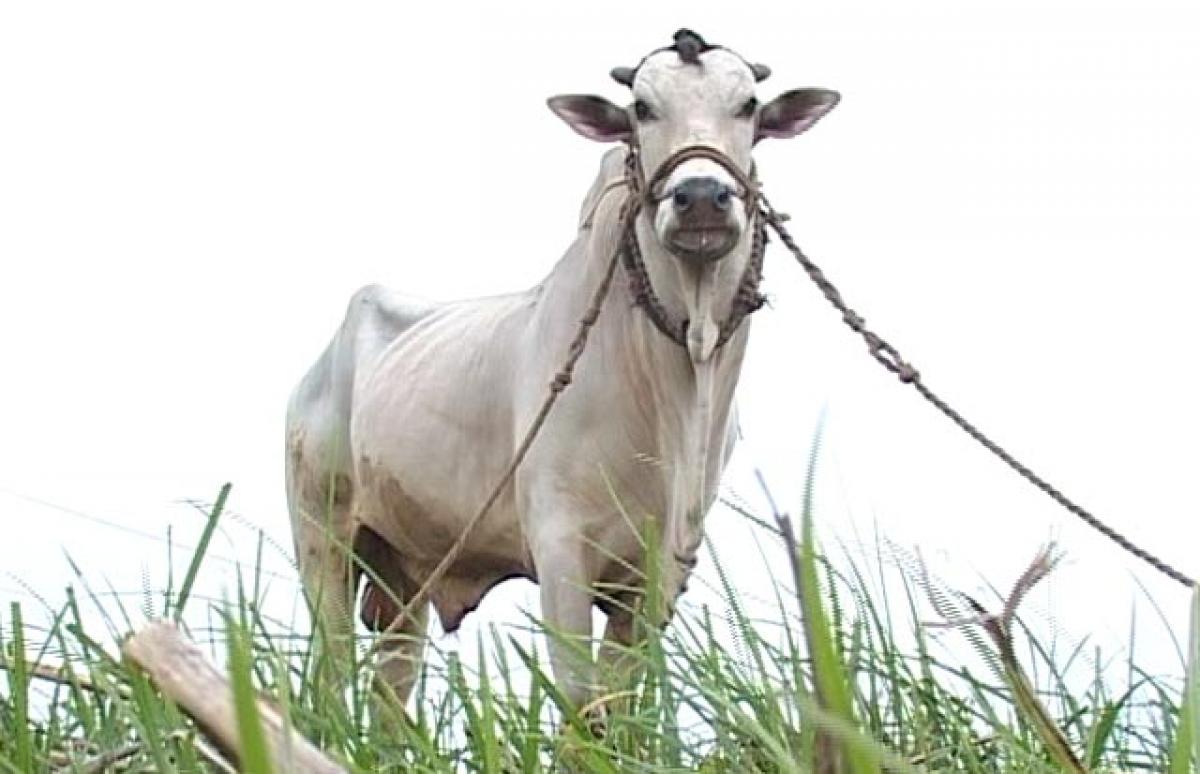Ongole bull Facing a threat to its existence

The Ongole bull famous all over the world for its charm and reproductive value besides withstanding high temperature and disease-fighting capacity found in good number in Gundlakamma and Paleru areas, near here, is facing a threat to its very existence because of the government’s indifference in giving a boost to its breeding and high cost of maintenance.
During 1961-62 some bulls along with 107 cows were stated to have been moved to Brazil. Thanks to artificial insemination as many as ten lakh such animals were raised in that country. Now it has 2.5 crore bulls and cows. Their export fetches the equivalent of Rs 2,500 crore to that country
Ongole: The Ongole bull famous all over the world for its charm and reproductive value besides withstanding high temperature and disease-fighting capacity found in good number in Gundlakamma and Paleru areas, near here, is facing a threat to its very existence because of the government’s indifference in giving a boost to its breeding and high cost of maintenance.
The bull which can weigh as much as 1,600 kg with good body structure fetches a price of Rs 10 lakh. Even Ongole cows are famous for their milk yield. As many as 3,000 such cows used to be taken from here to Madras during the 19th century for supplying milk.
Rearing of bulls thrived in Guntur, Nellore and Prakasam districts thanks to the patronage of the British way back in 1867 to set apart 30 per cent of the crop production as fodder for cattle. These animals used to consume the grass grown in fields and became strong. Following the absence of such facilities the Ongole bull does not get the required fodder.
Interestingly attempts were made prior to independence to move the Ongole bull to foreign countries. During 1961-62 some bulls along with 107 cows were stated to have been moved to Brazil. Thanks to artificial insemination as many as ten lakh such animals were raised in that country. Now it has 2.5 crore bulls and cows. Their export fetches Rs 2,500 crore to that country.
Among its prized possessions is the ‘Karavadi’ variety which bagged the first prize at the national-level events. There is demand for the Ongole bull in the US and Australia, besides 30 other countries because of their high yield of mutton five quintals in just two years. Despite the stringent regulations against their export, the trade continues.
Bull-breeding centres were launched in 1984 in Chintaladeevi and Chimakurti and shifted to Chadalavada in Naguluppalapadu in 2001 spread over 200 acres. Only 40 acres are being used for sheds, hospital and administrative building. Only 10-20 acres are being used for raising fodder, while the rest of 150 acres area is not used for any purpose.
Fortunately, farmers of interior areas of Yerragondapalem constituency are taking pains to ensure that the bull survives. The fact that their number has reached 10,000 is a proof of their efforts bearing fruit in Palutla and Kolukula villages. The drought-hit farmers don’t hesitate to travel hundreds of km for securing fodder. If the administration opens special guest houses in such areas the Ongole bull can regain its past glory.

















